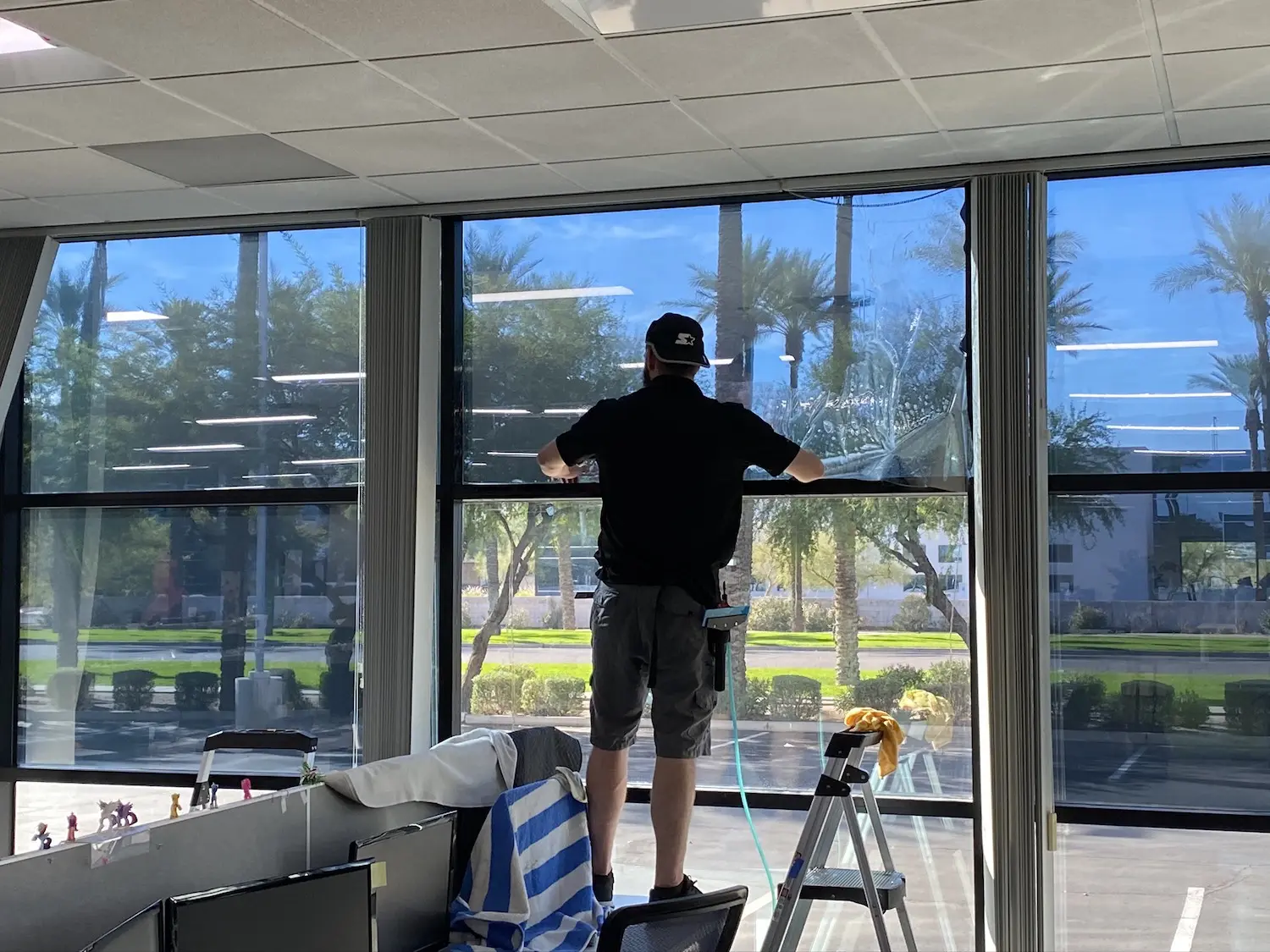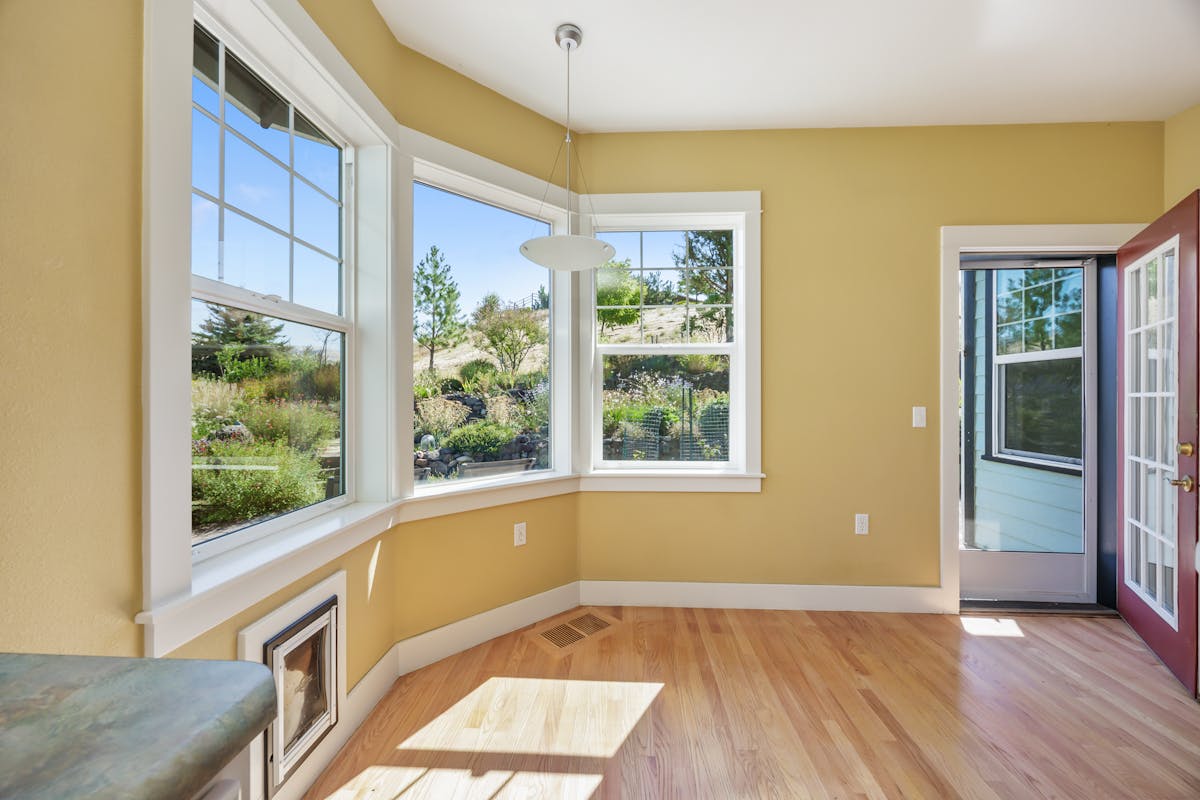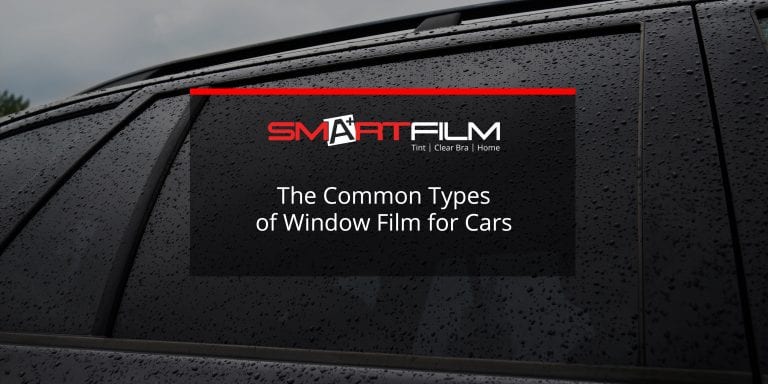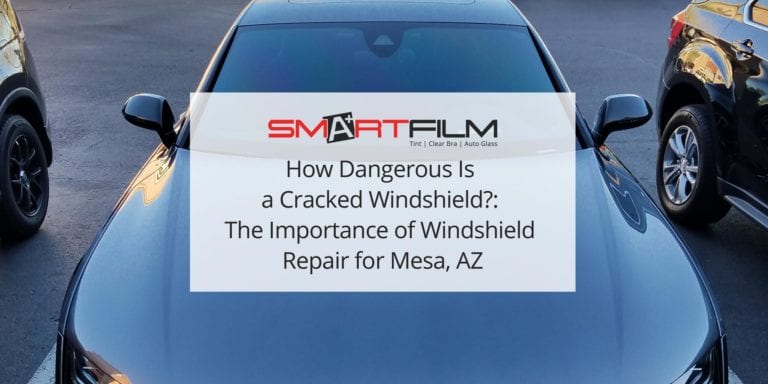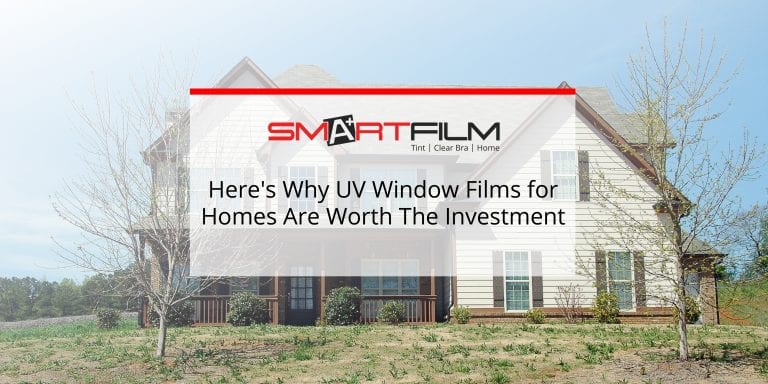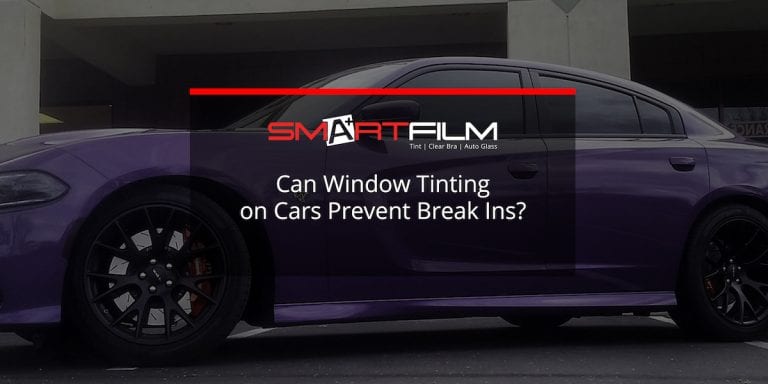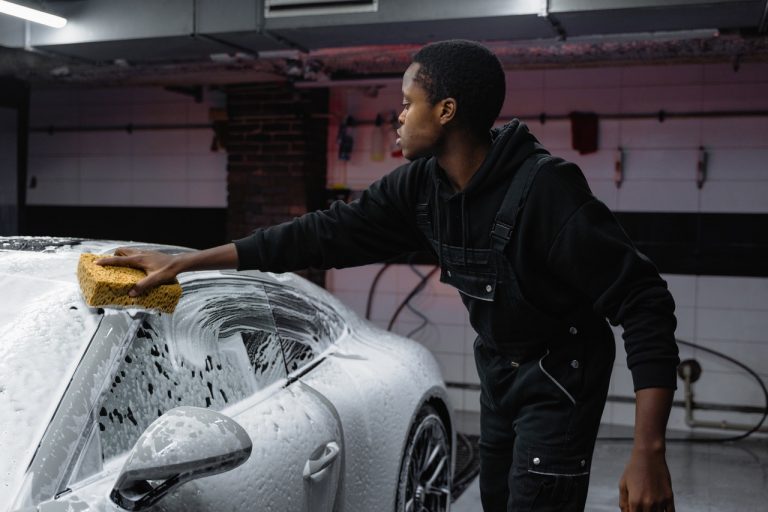Best Residential Window Films: Top 10 Favorites
Finding the best residential window film for your home isn’t as simple as picking a shade of tint. Today’s options range from privacy window film that keeps prying eyes out to UV protection films that block harmful UV rays, to heat reduction solutions that improve temperature control year-round.
The challenge? Each home has unique needs based on climate, window placement, and lifestyle.
Statistics from the U.S. Department of Energy show that untreated home windows can account for 25%–30% of residential heat gain and loss, driving up energy costs.
The right home window film can reduce glare, improve energy efficiency, and even help save energy by cutting heat transfer during hot summers and improving insulation in the winter. In hotter climates, residential window tinting can lower indoor temperatures by up to 10°F, making a noticeable difference in comfort.
However, not every film is perfect for every situation. Highly reflective tints may be ideal for sun’s heat control, but might slightly change the look of your home’s exterior.
Lighter films preserve natural light but may offer less fade prevention. That’s why choosing the right window film involves balancing performance, style, and your budget.
In this guide, we’ve curated our Top 10 Favorites for the best residential window film, tested and trusted for excessive heat control, UV protection, and enhanced curb appeal.
Whether you want to protect your interiors, cut energy consumption, or make your home cooler and more inviting, you’ll find an option that fits your space perfectly.
Top 10 Best Home Window Film Options to Consider
1. LLumar Low-E Window Film: Dual-Season Energy Efficiency
The LLumar Low-E line is engineered for year-round comfort. During summer, it reflects the sun’s heat, reducing heat transfer and lowering energy costs by decreasing cooling demand.
In winter, its improved insulation helps retain warmth, making it an excellent choice for temperature control in varied climates. It also blocks 99% of harmful UV rays, offering strong fade prevention for furniture, floors, and art.
Pros: Exceptional energy efficiency, UV defense, and reduces excessive heat and cold loss.
Cons: Higher upfront cost compared to standard window tint.
2. LLumar Dual Reflective Window Film: Privacy + Glare Reduction
This privacy window film has a mirrored exterior for daytime seclusion and a tinted interior for reduced glare and better indoor clarity. It’s especially effective in bright rooms with natural light that often suffer from glare issues.
Pros: Daytime privacy, reduced glare, moderate heat reduction.
Cons: Privacy decreases at night when indoor light is stronger.
3. 3M Scotchshield Safety and Security Film: Break-In Resistance
Designed primarily for security, this home window film strengthens glass, making it more resistant to breakage from impacts or attempted forced entry. It blocks up to 99% of UV rays, protecting interiors from sun damage while offering safety benefits.
Pros: Enhanced safety, UV protection, and a boost in resale value.
Cons: Limited heat control; not ideal for hotter climates without supplemental solutions.
4. LLumar Harmony Window Film: HOA-Friendly Nano-Ceramic Technology
This nano-ceramic window film offers excellent heat reduction and UV protection without altering the home’s exterior appearance. Perfect for neighborhoods with strict HOA rules, it maintains the natural light and warm feel of interiors.
Pros: Non-reflective, HOA-compliant, effective temperature control.
Cons: Less effective for excessive heat compared to reflective films.
5. 3M Thinsulate Climate Control Film: Four-Season Comfort
3 M’s Thinsulate line excels in both heat control and cold-weather insulation, keeping home windows efficient across all seasons. Its neutral appearance blends seamlessly into any home design while reducing heat transfer and energy consumption.
Pros: Year-round energy savings, neutral design, comfort in all climates.
Cons: Not ideal for homeowners seeking dark tint or mirrored privacy.
6. Hüper Optik Dekorativ Film: Decorative and Privacy Enhancements
This decorative window film adds visual appeal to glass surfaces such as shower enclosures, sidelights, or interior partitions. While it’s not the leader in UV protection, it can provide privacy and serve as a stylish alternative to decorative curtains.
Pros: Variety of designs, enhances aesthetics, maintains natural light.
Cons: Minimal UV and heat reduction benefits.
7. LLumar Neutral Window Film: Subtle Heat & Glare Control
Neutral films balance glare reduction, moderate heat reduction, and UV defense while preserving a clear, unobstructed view. This makes them ideal for rooms with artwork, entertainment systems, or scenic window views.
Pros: Maintains aesthetics, reduces glare, and sun damage.
Cons: Less aggressive heat control compared to darker or reflective tints.
8. 3M Sun Control Window Film: Infrared Ray Blocking Power
Designed for hotter climates, this ceramic film blocks up to 80% of infrared rays, significantly reducing the sun’s heat without compromising clarity. It’s scratch-resistant and designed for long-term durability.
Pros: Strong heat reduction, infrared control, clear view.
Cons: Higher cost; may not be necessary for mild climates.
9. Hüper Optik Fusion Series: Budget-Friendly UV Protection
An affordable residential window tinting solution, the Fusion series blocks 99% of harmful UV rays, helps reduce heat, and allows plenty of natural light into the room. Ideal for homeowners seeking energy efficiency without overspending.
Pros: Cost-effective, UV defense, bright interiors.
Cons: Moderate heat reduction; not for extreme temperature control needs.
10. 3M Sun Control Prestige Series: High-Performance Heat Reduction
Prestige films deliver advanced heat reduction without high reflectivity, keeping the glass clear and avoiding interference with cell or satellite signals. They’re perfect for year-round comfort in hotter climates and offer significant energy savings.
Pros: Low-reflective, strong sun’s heat control, signal-friendly.
Cons: Premium price point; professional install window film service recommended.
Residential Window Film Comparison Table
| Film Name | UV Protection (%) | Heat Reduction (%) | Glare Reduction (%) | Ideal Use Case |
| LLumar Low-E | 99 | 60 | 60 | Year-round comfort, energy savings |
| LLumar Dual Reflective | 99 | 55 | 70 | Privacy + glare control |
| 3M Scotchshield Safety & Security | 99 | 20 | 25 | Security + UV protection |
| LLumar Harmony | 99 | 50 | 50 | HOA-compliant efficiency |
| 3M Thinsulate Climate Control | 99 | 55 | 50 | Four-season temperature control |
| Hüper Optik Dekorativ | 20 | 10 | 15 | Decorative + privacy enhancement |
| LLumar Neutral | 99 | 45 | 55 | Subtle heat & glare reduction |
| 3M Sun Control | 99 | 80 | 65 | Infrared ray blocking |
| Hüper Optik Fusion | 99 | 40 | 40 | Budget-friendly UV protection |
| 3M Sun Control Prestige | 99 | 65 | 55 | Premium heat control + low reflectivity |
How Do You Decide What’s Best?
Selecting the best residential film isn’t just about picking a shade you like; it’s about matching performance to your home’s needs. Start by considering your climate.
If you live in hotter climates, prioritize films with high heat reduction and infrared ray blocking technology to keep interiors cooler and reduce strain on your HVAC system.
Next, think about aesthetics. Some neighborhoods have HOA rules that limit highly reflective tints, so low-reflectivity or neutral window film options may be best. If you want to keep your natural light while improving comfort, a subtle ceramic or nano-ceramic film could be ideal.
Your priorities will also guide your choice. If UV protection and fade prevention are top concerns, choose films with 99% UV blocking. For privacy, look for privacy window film or dual-reflective styles. If security is a factor, consider safety and security films designed to reinforce your glass.
Finally, factor in your budget. Premium films deliver maximum temperature control and longevity, but mid-range options can still offer impressive energy savings. Remember, while most films block UV rays, not all excel in privacy. For best results, consult a residential window tinting expert for a tailored solution.
Factors to Consider Before Installation
It’s important to evaluate several factors to ensure you get the right balance of performance, style, and value.
1. Location & Climate
Your geographic location plays a major role in film selection. Homes or offices in hotter climates—like Arizona—benefit most from films offering high heat reduction and UV protection.
For properties with large, sun-facing home windows, consider reflective or ceramic films that block infrared rays and minimize heat transfer, helping maintain indoor temperature control and lowering energy costs year-round.
2. Window Size & Placement
The size and exposure of your windows affect the level of solar protection you’ll need. Larger panes or windows that receive direct sunlight for most of the day require stronger heat control films with high solar rejection. Meanwhile, smaller or shaded windows can often use lighter privacy window film or neutral tint options, which allow more natural light without compromising comfort.
3. Interior Design & Functionality
Your film choice should complement your interior design goals. In open-plan homes or offices, frosted or decorative window films can define spaces without blocking light.
These films are ideal for creating privacy in conference rooms, bathrooms, or entryways while maintaining an airy feel. You don’t need to cover the entire glass—partial designs like horizontal bands, geometric patterns, or even custom-printed films can add both function and style.
By carefully weighing these factors, location, window placement, and design needs, you can select a window film that enhances comfort, supports energy efficiency, and elevates your property’s curb appeal.
Professional Installation vs. DIY: Which is Right for You?
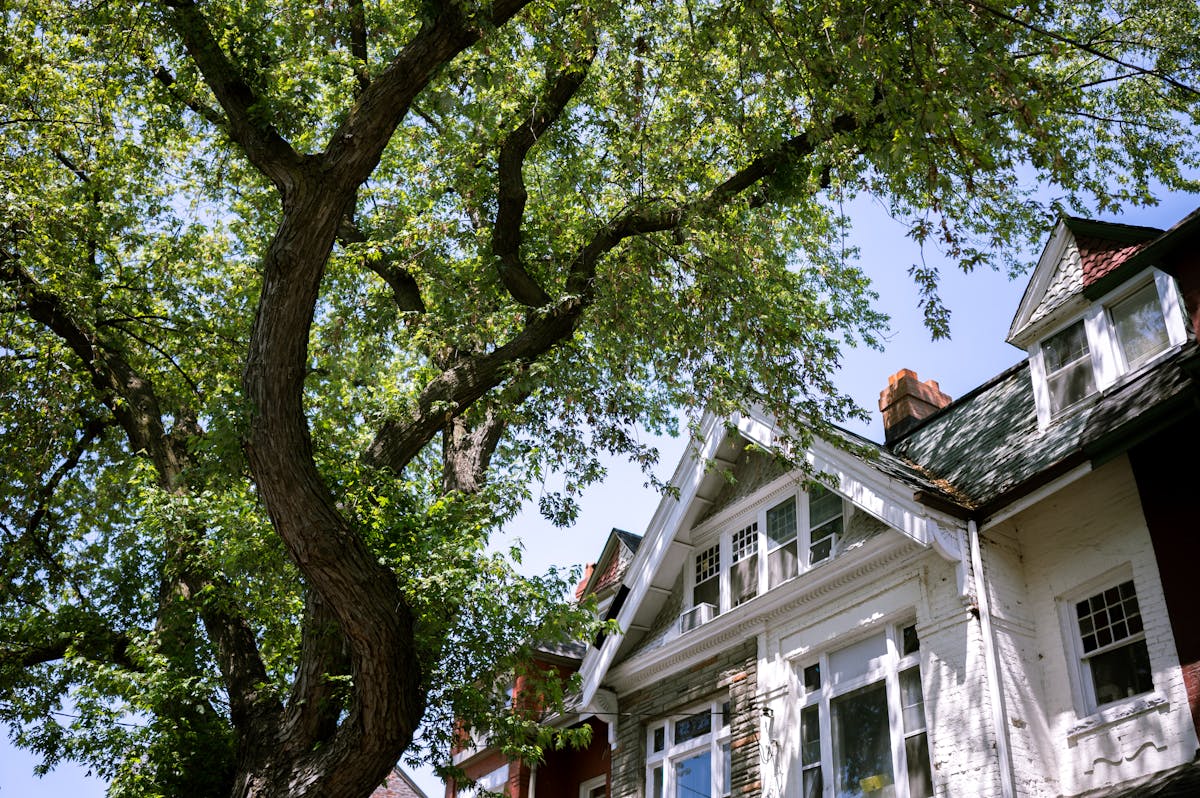
When investing in the best residential window, deciding between professional installation and a DIY approach can significantly impact results, performance, and longevity.
Benefits of Professional Installation
While DIY window tinting videos make the process look simple, achieving a flawless, bubble-free finish requires skill, precision, and the right tools.
At SmartfilmAZ, our installers have spent years perfecting the art of applying home window film on different glass types, from standard panes to custom shapes.
A professional window film installation ensures:
- Perfect adhesion without bubbles, wrinkles, or peeling.
- Tailored film recommendations for each window’s size, orientation, and exposure.
- Even application for a polished, professional look.
- Warranty protection from manufacturers that often only applies when a certified dealer does the installation.
In addition, a pro can advise on UV protection, heat reduction, and privacy window film solutions based on your climate and design goals. This guidance helps you get the right window film for both performance and style.
When DIY Installation Makes Sense
DIY can be a cost-saving option for small-scale projects, such as applying decorative film to interior glass or adding privacy tint to bathroom windows. However, for large, sun-facing home windows, especially in warmer climates, DIY applications often result in:
- Air bubbles or trapped debris
- Uneven cuts along the window edges
- Poor adhesion that leads to peeling within months
- Reduced energy efficiency due to gaps or misalignment
If you choose the DIY route, use a high-quality spray bottle with soapy water for application, follow manufacturer guidelines closely, and work in a dust-free environment.
Maintenance & Durability: Protecting Your Investment
Film Longevity
The lifespan of your window film depends on its type and quality. Premium options, such as ceramic, nano-ceramic, or metallic films, can last 10–20 years with minimal degradation, maintaining temperature control and UV blocking over time.
On the other hand, dyed films are more budget-friendly but prone to fading, bubbling, and losing their heat control properties within 3–5 years, especially under excessive heat and the sun’s rays.
Cleaning & Care Tips
Proper cleaning is essential for maximizing the energy efficiency and appearance of your film. Always:
- Use a soft, non-abrasive cloth or microfiber towel.
- Apply mild, ammonia-free cleaning solutions to prevent film damage.
- Avoid sharp tools or abrasive sponges that can scratch the surface.
- Clean gently in vertical or horizontal motions, not circular scrubbing.
By following these care guidelines, you can reduce glare, prevent fading, and keep your windows looking pristine for years.
Professional installation may require a higher upfront investment, but the return in durability, performance, and curb appeal often outweighs the cost—especially for energy savings and long-term comfort.
How to Choose the Best Window Film
Selecting the best residential window film starts with identifying your priorities whether that’s UV protection, energy efficiency, privacy, or enhancing style.
The right film can improve comfort, reduce energy costs, and elevate your home or business’s appearance. For the best results, consult a professional installer who can recommend options tailored to your windows, climate, and design goals.
From commercial tinting to privacy, reflective, frosted, or decorative films, an expert will ensure the perfect fit and flawless finish, helping you achieve both performance and aesthetics for your space.
Contact Us!
Our expert window tinting and paint protection film services in Mesa, Tempe, Gilbert, and the surrounding Arizona metro area will keep your car cooler, protect your loved ones from UV rays, and maintain its pristine condition. Visit our website or shop to explore the perfect tint for your vehicle!
FAQ’s
How Long Does Residential Window Film Last?
High-quality residential window tinting can last anywhere from 10 to 20 years, depending on the type of film and the level of sun exposure. Ceramic and nano-ceramic films offer the best durability, while dyed films may need replacement every 3–5 years.
Will Window Tinting Make My Home Too Dark?
Not necessarily. Many modern home window films are designed to block UV rays and the sun’s heat while allowing plenty of natural light. Neutral or low-reflectivity films maintain brightness while improving temperature control and reducing glare.
Can Window Film Lower My Energy Costs?
Yes. According to the U.S. Department of Energy, installing the right window film can reduce heat transfer and energy consumption, cutting cooling costs by up to 30% in hotter climates.
Does Window Tint Block All Harmful Uv Rays?
Most premium films block 99% of harmful UV rays, protecting your skin, furniture, and flooring from sun damage and extending the life of your interiors.
Is Professional Installation Worth It?
Absolutely. Professional window film installation ensures a flawless, bubble-free finish, maximizes film performance, and often includes a manufacturer’s warranty that DIY applications can void.
